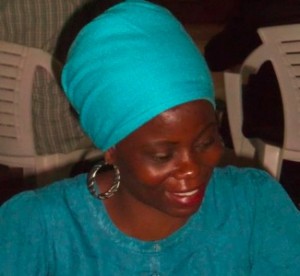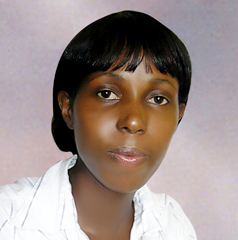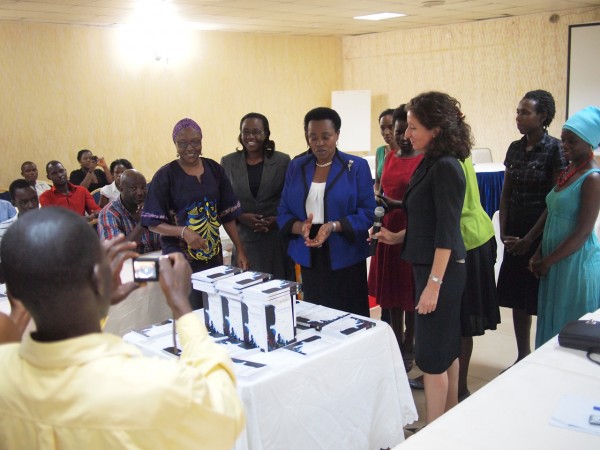Summoning the Rains:
African women on patriarchy
Posted by start 2 July 2012
Summoning the Rains is a collection of short stories by ethnically diverse African women, published by Femrite after their 3rd Writers’ Residency. In this review, Serubiri Moses wishes to explore the representations of women and young girls in the book and relate these images to social and political paradigms, both current and past.

Reviewed by Serubiri Moses
The Girl from a broken home
The girl from Lillian Aujo’s short story My Big Toe is detached. With a languid and charismatic sense of humor and imagination, the sad realities of paternal abandonment that pervade her life are reduced to comic happenstance.
This is power in the hands of the protagonist, who comes off as young and self-aware, but not without an opinion. The problem presented of missing a father figure is challenged by fierce satire centered around a “big toe”.
The writer uses this character as a vehicle for her own philosophy; suggesting that if parents can disown their children, then perhaps children can disown their parents as well. An idiosyncratic, personalized world view maybe, but it doesn’t take away the fact that the girl is from a broken home.
Aujo’s story satisfies my literary thirst in four pages, with its richly colored structures, lifted by such literary devices as stream of consciousness writing and the use of monologues and soliloquy to convey a comic masterpiece.
The Girl being a victim of rape
The girl in Aujo’s story can be compared with a similar character in Nakisanze Segawa’s story. They are both young girls of the same age range, but where one girl is triumphant, the other one is unsuccessful. The latter is both the victim of rape by her father and in the same scene a victim of money-driven patriarchy, when her father after the act throws two 50,000 shillings-notes in her face.
The story skillfully employs a fast-paced plot, but is quickly weighed down by narrating in first person, giving a sense of the constant shifting of unsettled ideas—some of which are priceless—softly decrying the submissiveness that women have to face.
We live in an era in which child sacrifice is commonplace. The parallel between this story and those in the media on child sacrifice rings a bell.
The Girl without a father figure
Another theme which is highly accessible is the refugee at home. As Uganda’s population continues to be more ethnically diverse, there is a striking tendency to define where home is, not to mention what home is.
The story from which the title of the collection is taken—In The Shadow of God—by Gothataone Moeng, is a lyrical masterpiece woven into the potent music of Botswana, and it contains parading for the king, village life and celebration.
Moeng makes this world accessible, and by doing so one becomes familiarly drawn to the protagonist, who is a little girl without a father figure and over-protected by her mother.
Here are definitely signs of a potent African writing reemerging, like in so many of the short stories. However, these are mere glimpses, and much deeper reflection is desired from the promising writers who only had a brief residency to create and polish the stories.
The protagonist is constantly monitored and yelled at by her out-of-control mother, but still she manages to thoughtfully observe her vulnerable parent from a distance, always seeking to understand her unexplainable behavior.
The mother is burning silently with a radical feminism, in which men can never be more powerful than women and all power must be taken from men, but at stake is her patience with this power, which she uses to hurt the daughter she loves most.
The story showcases both the intimacy and abrasion which can occur between mother and daughter, also proving that there is land on which perennial love can be cultivated. It is fascinating to read about this kind of relationship reminiscent of Toni Morrison’s works.
A genuine humanity is evident in the author’s treatment of the gentleman who makes the protagonist pregnant. There is nothing violent about him; in fact he is viewed as a giver of freedom to the protagonist, a freedom which later manifests into her own liberation from her mother, a necessary moment in the girl’s life—and in the collection.
The Girl who scores
The stories in the collection are often written for women by women, in a confessional way emphasizing the first person’s experience. Such is the case in Nana Nyarko Boateng’s Small Poles, a sweet confession which recounts a girls passage into puberty, while, during and after scoring a goal in a football match with the boys.
Generally, the stories are narrative as well. When bundled together they narrate a unified epic. Still each writer retains their own sense of individuality which is reflected in the variety of styles, mental paradigms, and narratives.
Mother Africa
When Leopold Senghor and Aime Cesaire developed and promoted the symbol of Mother Africa, they were referring to an identity which they perhaps had lost; it was not a figment of their imagination. The idea was to reclaim power through the reconstruction of identity.
Florence Stratton writes that the Mother Africa trope was mooted in the Negritude school who through their writings sought to depict Africa in the figure of a woman (39).
In another story, Mother Bird’s Eggs by Juliet Kushaba, the protagonist has a strong pull toward nature. She feels for nature, which unfolds in a particular incident when she discovers a nest in the forest with three eggs. She begins to cry out for the Mother Bird, to the irritation of Marvin, their leader, who keeps shouting “what is wrong with you?”
The metaphor of nature in this Mother Bird is alluded to the death of the protagonist’s mother in a scene where the father kicks her pregnant mother’s belly. The protagonist tries to save her mother, in vain.
There is peace evident in this story that settles for a return to natural ways; a simple and traditional way of life, and a perpetual love and appreciation for nature which is attributed to African ways of life. It is a subtle remedy for the danger looming in a troubled past, attributed to violence, ghosts and mass deaths.
This dead woman could also be the nation, and Mother Bird may be evidence of something which perhaps is more inherently ours and that has not been destroyed over the turbulent times. It very much echoes our own Ugandan literature and the philosophy of pan-Africanists who praised the simple, traditional African way of living and being.
Individualist feminism
The radical feminism of the 1960s, in which the women elite blame gender inequality on class struggle, demands that women take the power through owning their own property; in having their own social status independent of a male spouse. Its mantra was an individualism that was defiant and at times even forceful. This brand of feminism burns silently through many of the stories in the collection.
There is something chilling and unsettling about that last mental picture in Sylvia Schlettwein’s Mother of the Beast, in which a middle-aged woman is looking into the distance and wearing a coat made of jackal fur. She has taken the power from her husband, from her son and from everyone. She just wants one thing that nobody can give her: The jackal she raised from a pup that ran away into the wild.
Eventually, when her son grows up, he tries desperately to imitate this jackal that so obsesses his mother’s life, but he cannot worm through its apparition. Her husband forcefully makes love to her to wake her up from the initial loss of this animal, but it does not turn her around—she sets off to look for the jackal.
It is twisted in a way that puts self-individualism at the forefront without seeming too crude or too bitter. Everyone seems to try, but eventually give up. She in turn is left alone in that last scene with her jackal fur wrapped around her shoulders, failing to pull together her family life or her work life, left in a trance, bleak and abandoned.
Conclusion
Susan Sontag in ‘On Photography’ (1977) argues that creating an alternative world of images, in which a surreal dislocation of reality is offered, gradually decreases the viewer’s sensitivity to images of suffering and terror. It creates the tendency to not feel anything. For a writer, especially one who has the power to influence, this can be dangerous.
It must be questioned what impact the story has on its reader in terms of humanity. It is unlikely that a writer who has little sensitivity towards pain and in this way is writing so explicitly of gruesome events, has the opposite impact on their reader.
This does not imply that these brilliant, emerging writers should become less deep in their observations, but that they should give the evidence of humanity along with these observations.
A close attention to the lower classes, as in Russian literature, would be beneficial for these women writers, who would have—I imagine—a great impact on the social framework in Kampala and in urban Africa.
Such honesty is not only essential to African literature but also to the people who inhabit these spaces and those that live this kind of life.
Serubiri Moses has been published in The New Vision reviewing live music. As a poet, he is featured on the pan African website, Badilisha Poetry Exchange.


